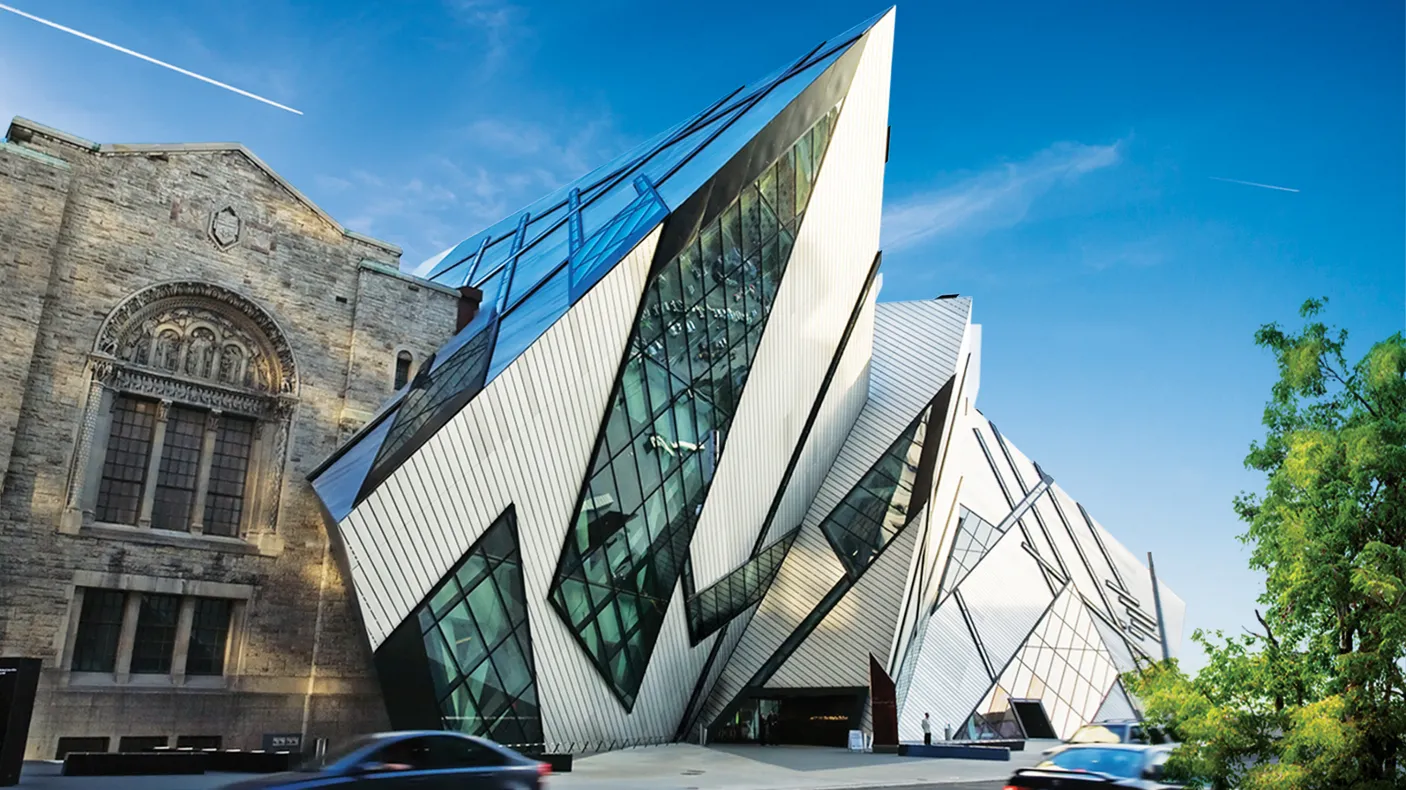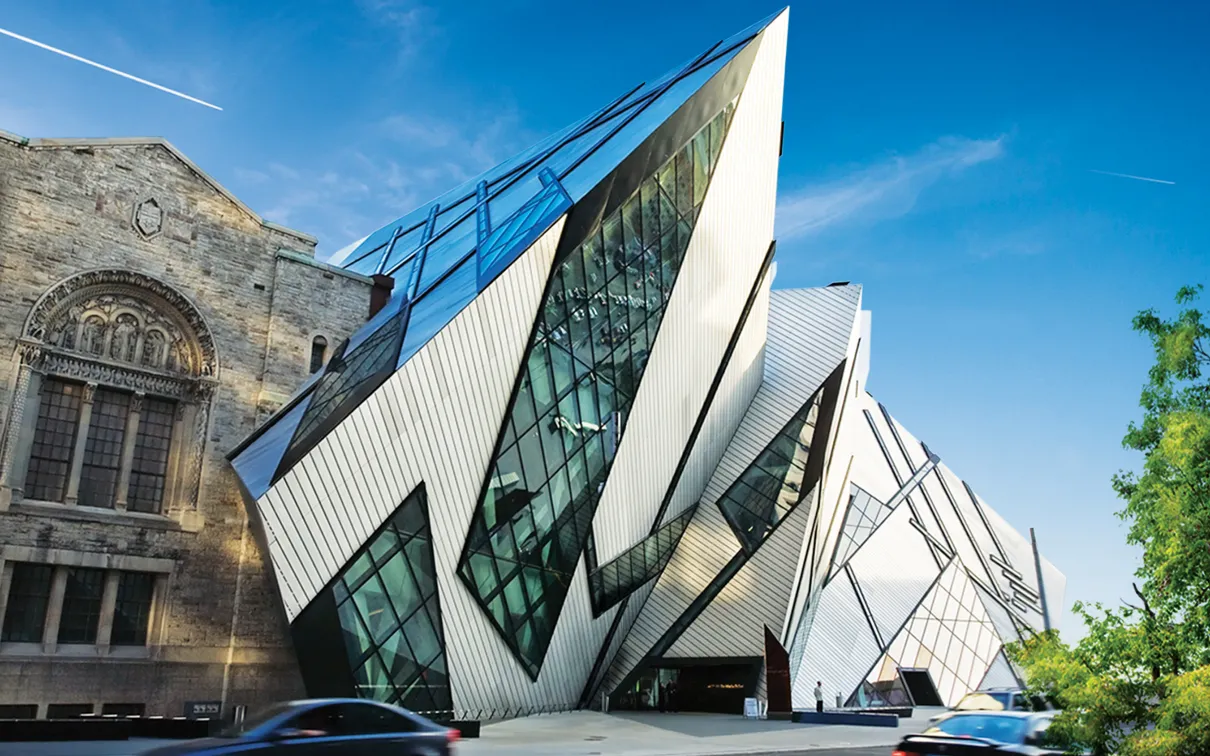Sovereign Allies/Living Cultures First Nations of the Great Lakes
Published
Category
Press Release
Opening July 14, exhibition showcases the First Nations participation in the War of 1812 and their lives in its aftermath
On the bicentennial of the War of 1812, the Royal Ontario Museum (ROM) presents an original exhibition, exclusively drawn from the ROM’s rich Canadiana, anthropology, European, and textiles collections.
Opening Saturday, July 14, 2012 for an indefinite engagement, Sovereign Allies/Living Cultures: First Nations of the Great Lakes explores the participation of First Nations warriors in the War of 1812 and, in the War’s aftermath, the fate of First Nations communities and cultures. Showcasing nearly 100 objects and original art works, the exhibition is complemented by ROM-produced videos featuring Haudenosaunee and Anishinaabe elders and historians reflecting on the War of 1812, and on First Nations beliefs and cultural practices today. Sovereign Allies/ Living Cultures is displayed in the Great Lakes case in the Daphne Cockwell Gallery of Canada First Peoples on Level 1 of the Museum’s Hilary and Galen Weston Wing.
Dr. Trudy Nicks, Senior Curator, Anthropology in the ROM’s World Cultures department, has curated the exhibition in collaboration with First Nations advisors. “The exhibit conveys stories of the War of 1812 and its aftermath from a First Nations perspective. Visitors will meet Haudenosaunee and Anishinaabe war leaders, as well as the well-known Shawnee warrior, Tecumseh,” said Dr. Nicks. “They will learn about the women of Mohawk Village at Six Nations who were left to manage village life after the war claimed great numbers of their sons and fathers. These women walked from Six Nations to Queenston Heights to attend the unveiling of the Brock monument, embarking on the arduous journey, more to honour the memory of their own warriors than celebrate the British General. In the two centuries since the War of 1812, First Nations communities have fought for cultural survival, maintaining their traditional beliefs, values, and practices despite great social and political pressures from the outside world.”
SOVEREIGN ALLIES
“…the Indians (insisted that they) were a free People subject to no Power upon Earth, that they were faithful allies of the King of England, but not his Subjects – that he had no right whatever to grant away to the United States of America, their Rights or Properties.”
Brigadier-General Allan Maclean, 1783
The exhibition’s Sovereign Allies section focuses on the First Nations who allied themselves with the British Crown in their efforts to prevent American expansion into their territories. The British, for their part, needed and valued the warriors’ forest warfare skills. Diplomatic relations between the First Nations and the British Crown had long been maintained through meetings and gift exchanges, a relationship symbolized by the metaphor of the silver Covenant Chain. Prominent among the gifts given by the British were silver adornments, such as gorgets, armbands, pendants and brooches, some inscribed with the Royal Arms, and a wide variety of cloth goods. The exhibit includes examples of these gifts, as transformed and worn by First Nations men and women in the late 18th and early 19th centuries.
Sovereign Allies features Haudenosaunee war leaders John Norton, John Brant, and John Smoke Johnson, and Anishinaabe war leaders Oshawana, Wabjijig, and Shingwaukonse, alongside prominent warrior Tecumseh. Clothing, diplomatic gifts, and traditional weapons represent these men in the exhibit. The leaders who survived the war, such as Shingwaukonse, would go on to rebuild their communities and negotiate for lands and rights with the foreign governments controlling their former territories. Long after the conflict, many maintained that they remained sovereign allies of the British Crown, and were subjects of no foreign government – a point driven home in speeches to the Prince of Wales on his 1860 visit to Ontario. Anishinaabe Chief JohnTecumseh Henry’s suit of clothing, worn to a meeting between Chiefs and the Prince of Wales during the 1860 visit, is included in the exhibit.
A section highlight is a British red ensign flag, a diplomatic gift presented to Anishinaabe Chief Oshawana, during the War of 1812. Kept by Oshawana’s descendants following his death, the flag eventually became part of the Oronhyatekha Historical Collection, first publicly displayed in 1902 in Toronto. Augmenting the display is a video documenting the ROM’s extensive conservation treatment of the flag.
Most objects featured in the Sovereign Allies section, while now of the ROM’s own collection, were originally part of the Oronhyatekha Historical Collection. Dr. Oronhyatekha (1841 – 1907), achieved success in the Victorian social and business world, his life also stands as proof that it is possible to engage with mainstream culture without surrendering First Nations values and beliefs. Never giving up his Mohawk identity or his interest in First Nations affairs, Dr. Oronyhatekha maintained that First Nations remained the sovereign equals of the British Crown, as they were when standing with them as military allies in the British-American wars.
Sovereign Allies concludes with a narrative, still remembered at Six Nations, of how the great loss of warriors from the community affected life at Mohawk Village in the aftermath of the War of 1812.
LIVING CULTURES
“You have a phrase called “Golden Age.” We do not want to be depicted the way we were, when we were first discovered in our homeland in North America. We do not want museums to continue to present us as something from the past. We believe we are very, very much here now, and we are going to be very important in the future.”
Georges Erasmus, Chief Assembly of First Nations, 1992
The exhibition’s Living Cultures section explores the ways in which First Nations cultures have remained vital despite centuries of contact with European cultures. The section begins by reviewing, and destabilizing, an old diorama designed to depict pre-contact Mohawk family life. Installed at the ROM in 1917, the display remained in place until the late 1970s. Visitors are invited to identify the interventions in the updated diorama, and to consider the stereotype of an unchanging, isolated indigenous culture portrayed by the earlier version. In contrast, the remainder of the Living Cultures section explores how Haudenousaunee and Anishinaabe beliefs, values, and traditional practices are expressed and continued through oral tradition, and through systems of social and political organization, music and performance, cross-generational sharing of traditional designs, and contemporary political action and protest.
This section’s objects and art works illustrate these processes at work today. The story of the creation of North America—Turtle Island—as the homeland for indigenous peoples is illustrated in contemporary art works. The structure and history of the Haudenosaunee Confederacy, the traditional form of government which continues to this day, is represented by the Circle Wampum (a reproduction created at Six Nations), a condolence cane, and a modern Hiawatha flag. A sample of doodemag pictographs illustrates the ancient clan system still followed by Anishinaabe people. The exhibit includes horn rattles and water drums which figure in both social and ceremonial Haudenosaunee life. An early jingle dress, circa 1900, relates to a healing vision that occurred in Anishinaabe communities. At powwows today, jingle dresses and dances are still associated with healing power. The sounds of drums, rattles, and the jingle dress are heard in a video presentation, and visitors can learn more about the context in which these objects are used in First Nations communities. An early 20th century birch bark box and beaded cradle board cover afford a rare opportunity to follow the transfer of a floral design across generations in an Anishinaabe family. Finally, a steatite sculpture, a Mohawk warrior flag, and a sweat shirt celebrating the blockade of the Mercier Bridge, represent the Oka crisis of 1990. These objects illustrate how political action and protest are part of the ongoing determination of First Nations to maintain their cultures and identities.
OTHER INFORMATION
The War’s bicentennial is marked by another exhibit at the ROM. Afterimage: Tod Ainslie’s Vision of the War of 1812 showcases 22 photographs documenting historically significant sites of the War of 1812. Taken by Burlington-based photographer Tod Ainslie using three pinhole cameras that he designed and built, the contemporary photographic works are displayed until Sunday, February 24, 2013 in the ROM’s Wilson Canadian Heritage Exhibition Room of the Sigmund Samuel Gallery of Canada.
Sovereign Allies/Living Cultures is included with paid general ROM admission. Visit www.rom.on.ca for information on this and other exhibitions at the ROM.


